Interview: Chris Weston talks Judge Dredd and says Adios, Rowdy Yates!
2nd June 2021
2000 AD Prog 2234 marks the return of Chris Weston to Judge Dredd, writing and drawing the done-in-one story, Adios, Rowdy Yates, giving us a tale that marks the end of a particular aspect of Judge Dredd’s history!
It’s the latest of Chris’ work on Judge Dredd, following his return to 2000 AD with various covers and then to the interior of the Galaxy’s Greatest with Prog 1800’s Dredd adventure The Death of Dan-E Cannon in 2012. After this, Chris has worked extensively with Rob Williams, their work together culminating in the Judge Pin saga.
We sat down recently with Chris to talk Judge Dredd, this latest tale, his love of 2000 AD, and why it’s always good to come home!
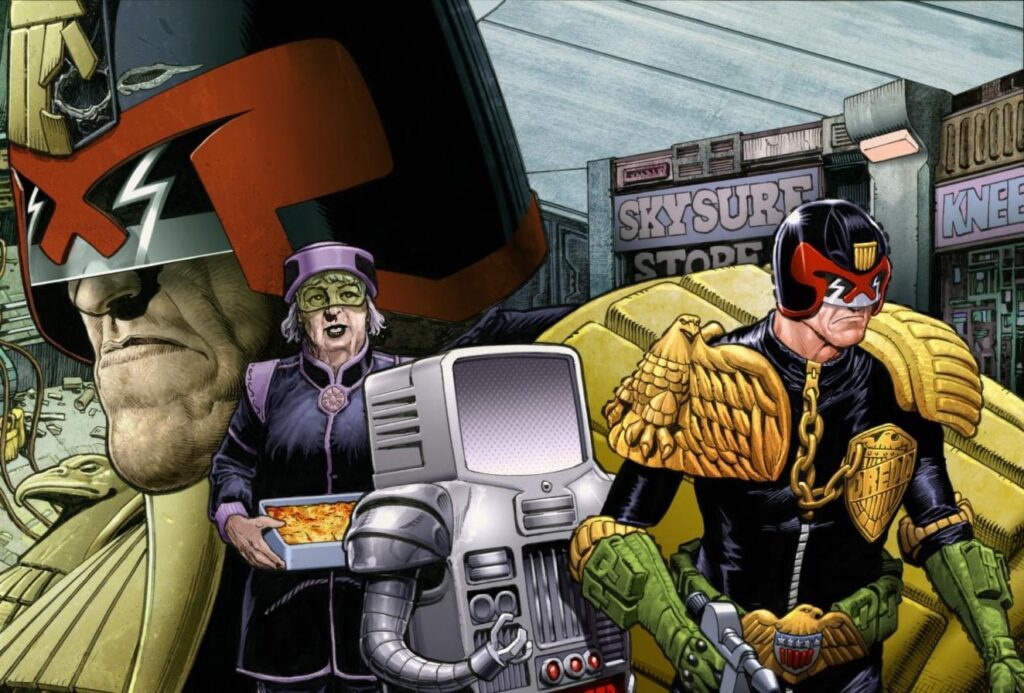
Hi Chris, we first knew you were up to something new with Judge Dredd when we saw the teaser image above that you put up on Facebook, with what looked like a modern Judge Dredd looking back to earlier days, complete with Carlos’ costume, Maria and Walter the Robot.
So… is one of those Dredds where something that happens to Dredd in the here and now has its roots in the past? All of which leads to a trip down memory lane?
CHRIS WESTON: Well, Richard, you’re not far off the mark! But I’m reluctant to go into the details, because I want the readers to discover the plot themselves when they read the comic.
What I will say is: I wanted to do something quite drastic to one of Mister Wagner’s earliest creations, and Tharg thought it best to ask him if we could have his permission first. Luckily, he had no problems with the idea, which was nice!
Well, having seen the strip, you’ve definitely done something drastic to something here!
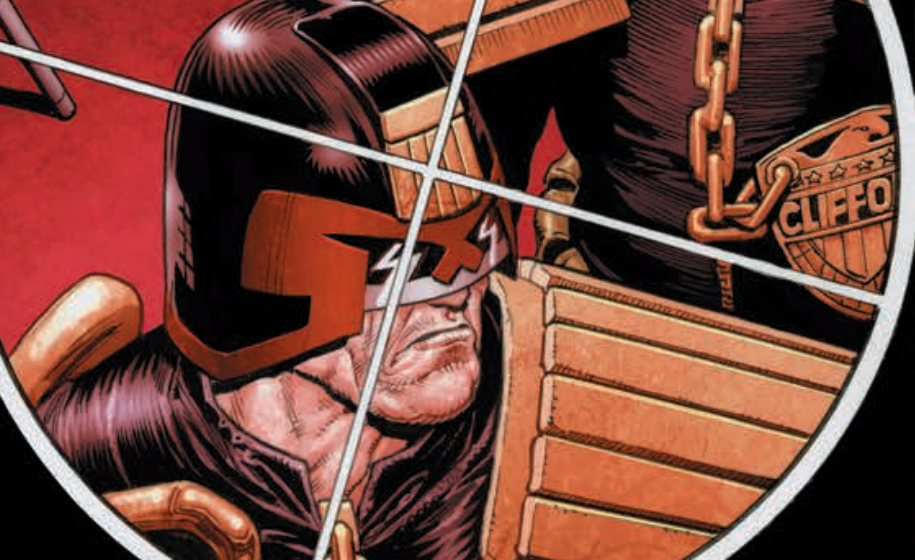
It’s a single Prog Dredd, just six pages, but it sounds like there’s going to be plenty going on.
CW: Yes, just the one episode. But I cram a lot of detail and incident into those six pages: vast crowd scenes, plenty of violence and mass-destruction! On top of that, I’ve also managed to weave in a subtle meta-commentary on the nature of Dredd himself. You know, the usual! I’m very interested to see what people make of Dredd’s last words in this story…
What can we draw from what appears to be a bullet hole in modern-day Dredd’s helmet?
CW: Oh, nothing too significant. It’s just some of the damage the Judge picks up along the way. I always liked the way Dredd’s costume got ripped to shreds in The Cursed Earth. He’s a character who benefits from receiving a lot of punishment, and distressing the uniform is a good way of showing that.
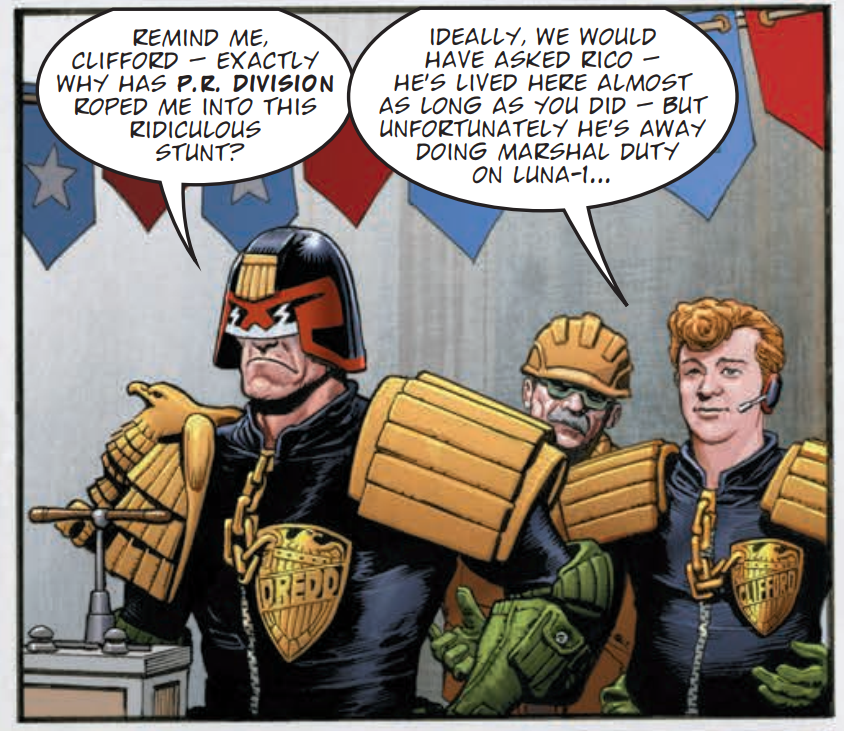
Looking back at that promo image, there’s definitely two styles you’re using, or perhaps two different styles of Dredd – presumably a deliberate thing to evoke that bygone era in the reader’s minds?
CW: I really wanted the reader to feel like they’d been transported back to that era, and reproducing McMahon & Ezquerra’s early, lumpy line-work is a handy way of doing that. It’s a visual shortcut. Plus, I’m a fan too… and I’m nostalgic for those early Dredd stories and styles. I’m fortunate to be in a position where I can bring that look back, however briefly.
You’re writing and drawing this one, something you’ve only really begun doing since 2009 and really only with Dredd (although of course there was that The Twelve: Spearhead one-shot in 2010). Firstly, was writing and drawing something that has always appealed?
CW: Oh yeah, definitely. While I’m sitting drawing, there’s a part of my brain that flies off into space and comes up with ideas for stories. The older I get, the harder it is to ignore those voices in my head.
Was it a case of spending the early part of your career perfecting the drawing and only once you had the confidence of experience did you feel that writing was a possibility?
CW: It was more a lack of confidence in my writing abilities. To be honest, I don’t find drawing that easy either; I don’t think I’m a natural. It was like: one impossible task at a time. I always dreamed of writing my own stories, but it’s only now I’m deep into my middle age that I realise if i’m going to do it, I’d best get started. Time is running out… and increasingly quickly!
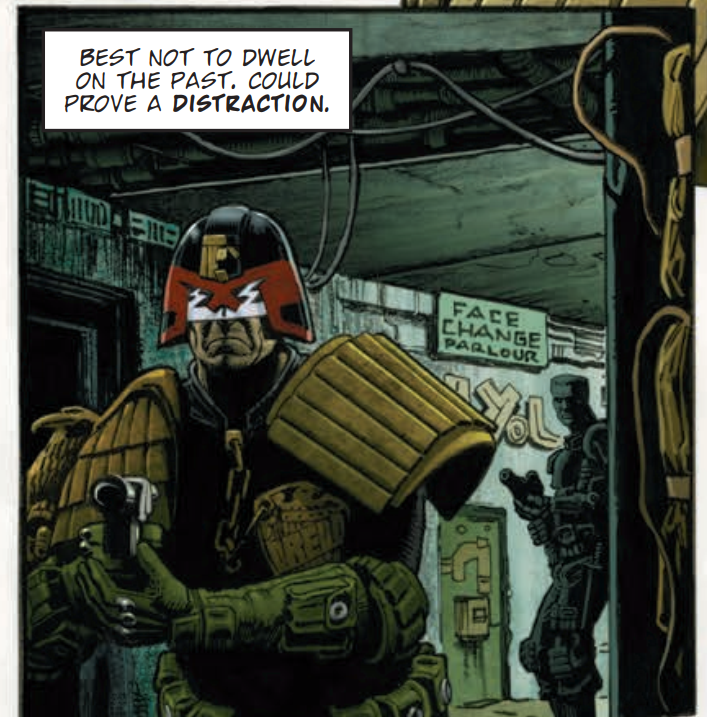
Is there something about Dredd that gets into your head and finds story ideas spring forth?
CW: Definitely. It’s an incredibly fertile ground to grow crops in. The world is so big and so varied. And you can tell all types of different kind of stories: horror, action, comedy, romance. It all fits into Mega-City One.
And as far as writing and drawing your own work, is it the case that Matt (Smith) is more willing to listen to pitches for stories than other editors/companies?
CW: Hah. That’s a good question. There’s probably something in that, loathe as I am to admit it! I’ve certainly had pitches turned down at other companies… an Elseworld’s Batman story and a Superman one-off all about a debauched professional Superman look-alike… and I guess those rejections didn’t boost my confidence much.
See, we’d all have loved to have seen your Batman and that Superman sounds great!
You started out in comics with a somewhat unusual path – apprenticing for the great Don Lawrence, after which you landed your first 2000 AD work on Judge Dredd at the youthful age of 19 (if my maths is right!)How did that come about?
CW: Sheer good luck, discovering my favourite artist in the world lived near my house and was generous enough to give me his time. Don whipped me into shape and after a year under his tuition, I had a portfolio strong enough to get me work at 2000 AD.
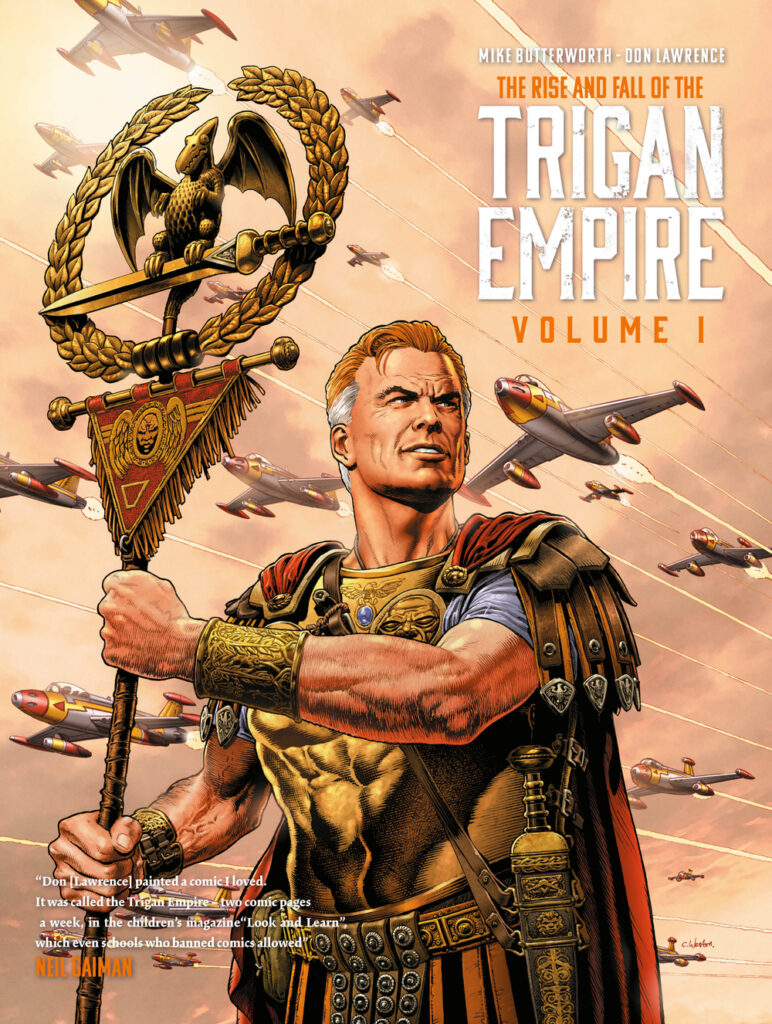
of the first volume of The Rise and Fall of the Trigan Empire.
CW: In truth, I don’t really think I deserved my place in The Galaxy’s Greatest Comic…I just wasn’t ready. But once again, I was lucky that there was a vacuum to be filled within those pages as the first wave of 2000 AD creators (Bolland, McMahon, Gibbons, Cam Kennedy, O’Neill etc.) had all buggered off to the States to pursue more prosperous work. 2000 AD was on the hunt for artists to replace them, and I just happened to be in the right place at the right time.
I think that’s why I’ve always poured so much time and effort into my work; to cram it full of detail and give the readers their money’s worth: I’m constantly trying to retroactively “earn” all that good luck I had at the beginning of my career; to pay the dues I don’t think I paid at the time.
I was going to ask you about the differences between working in the USA and for 2000 AD, as well as talking about what seems to be a period in your career where you went West to the USA and worked extensively for Marvel, DC & Vertigo… but looking back at an old CBR interview about your return to 2000 AD on the Judge Dredd strip, The Death of Dan E Cannon, I think this quote covers it all…
‘I went through that whole “Careerist Bollocks Phase” when I thought 2000AD would be a launching pad for fame and fortune in the U.S. market. I drew a couple of things that got attention at Vertigo and Marvel, worked with some big-name writers … but all the time I was still reading 2000AD every week and thinking “Bugger. I’d like to have drawn that.” Eventually, I just worked out I should be doing doing this for love and not for imagined acclaim and fortune sometime in the distant future. Hence my return to 2000AD.’
Does that still apply to this day?
CW: I don’t really want to dwell too much on my past jobs. I’m incredibly grateful that American publishers and editors liked my artwork enough to give me a steady stream of assignments and I bust a gut to meet their expectations. It was an intense period in my life and I found all the deadlines and the vast workload quite stressful. I think, eventually, I burnt myself out, unfortunately.
Luckily, I got thrown a lifeline by Hollywood and landed myself a job on “The Book of Eli” which has led to quite a nice run of movie-work. It was just what I needed at the time, to step back from comics for a bit; earn some decent money for once and recharge the batteries.
(You can see the production work and storyboards Chris did for Book of Eli here at his website)
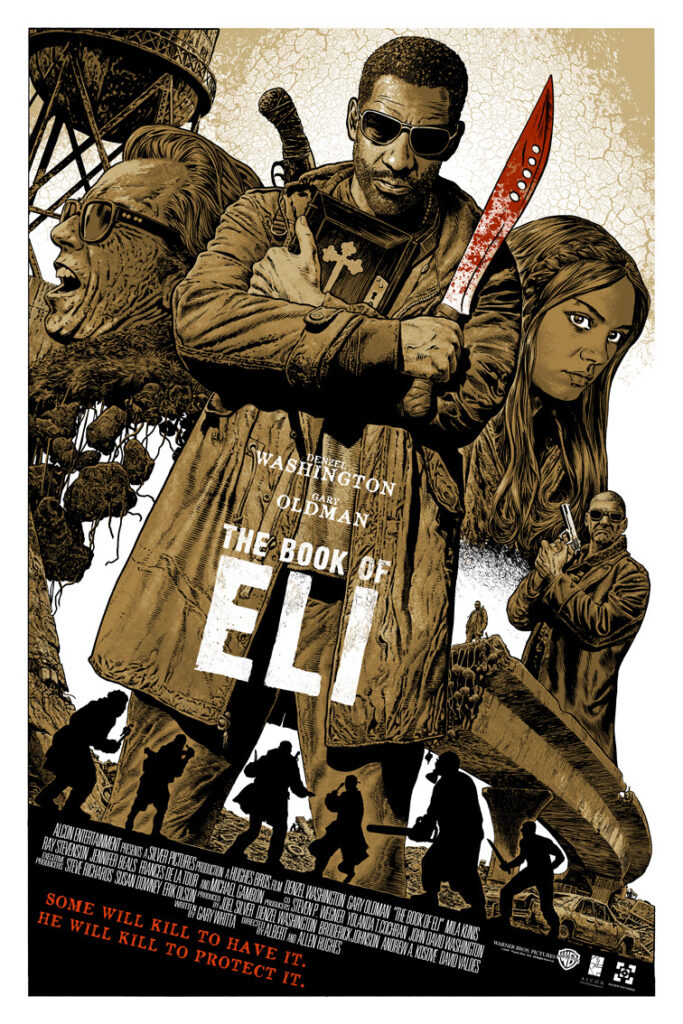
CW: Once I was ready to look for work in the comic strip industry again, I didn’t really want to throw myself back into the relentless slog of a US monthly comic book. It didn’t make me happy at all. I wanted to go back to my spiritual home: 2000 AD. The people there are a lot more laid-back and easygoing.
Is it a case of splitting your time between film work, prints, and 2000 AD now?
CW: Pretty much, yeah. I think I’m done doing the alternative movie poster prints, to be honest… unless I get a really good idea for one, or get inspired by a good film. There’s so many people who do those things better than me, so I’m not sure what more that I can bring to that medium any more. I think I peaked with my Prisoner poster! I’m never going to get a subject matter I love more than that!
(Again, the full range of Chris’ screenprints can be found here at his website.)
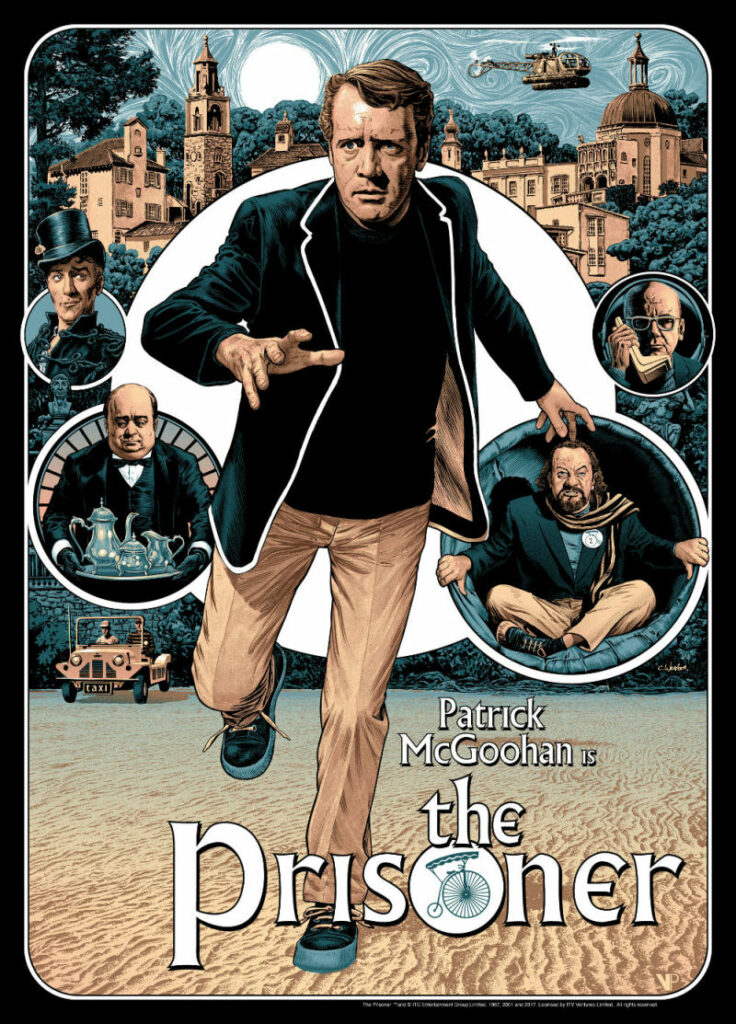
What do you think it is that brought you back to 2000 AD? The characters, the possibilities, the potential, the shorter format, the editorial freedom?
CW: It’s all those things. That’s why it’s such a dream gig for me, at 2000 AD.
How are you working now? traditional? Digital? A combination of both?
CW: I’m still traditionally hand-drawing. I scan it in and colour it digitally. I’m a very reluctant computer user, I must admit; I wish I was still hand-colouring with traditional paints… but, it’s quicker to colour digitally, and it gives you the ability to undo any mistakes you’ve made. The ability to quickly change and re-do your art makes it easier to get it closer to the way you see it in your head. Also, these days, I can make more money from the sales of original art than I get from the comic companies that commission it. So, if I went full-digital, I would be cutting off a very valuable source of income.
Normally I rent space in a shared studio, but since the recent lockdown, I’ve been working from home. I’m not a morning person, so I start quite late and it takes me a long time to warm up. I start a job by trawling the net, looking for reference material, doing research and wasting too much time on Twitter. About midday, I kick myself up the bum and get on with the work properly.
Using my computer, I make a montage of the comic book page. This can involve reference photos I’ve taken of myself in the appropriate poses; models I’ve made in various 3d programmes: Sketchup models: digital figures… it’s a real mish-mash. Once I’ve settled on the composition of the page, I print it out, throw it on a lightbox and draw over it onto cartridge paper.
I treat the digitally-created montage as a guide, more of a way to solve the story-telling issues. The finished drawing tends to come out looking quite different. I try to make it a bit looser and less copied-looking.
Once drawn and inked, I then scan it back into the computer and digitally colour it. I’m a very slow artist, so I end up working quite long hours, late into the night. But I take the weekends off.
And we’ll end, as we always do, with the traditional ‘what’s next for you?’ question!
CW: Unfortunately, I don’t think I’m allowed to say! I’ve just started a new strip but I think I’m supposed to keep everything about it secret, frustratingly!
I did a couple of week’s work on Star Wars: Cassian Andor last year… and did some costume designing on another big-budget film that’s coming out in 2022. This last one definitely ticked a “dream come true” box and I can’t wait to tell everyone about it! I’ll just have to be patient, sadly.
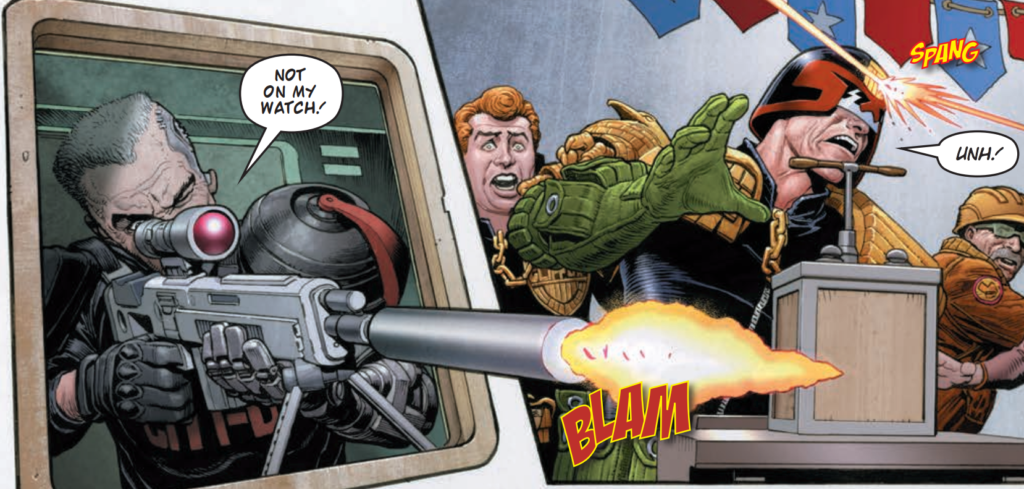
Okay then, lots of wait and see moments in this one! But that’s no problem, as we know that seeing Chris’ name attached to something always means it’s something we’ll be looking forward to! Thank you to Chris for taking time out from making great art to talk to us here at 2000 AD.
You can find Chris’ Judge Dredd story in 2000 AD Prog 2234, out on 2 June, available from anywhere good comics and the Galaxy’s Greatest is sold, including the 2000 AD web shop.
All of Chris Weston’s Dredd work, whether with Rob Williams or as solo writer & artist is collected in Judge Dredd: Control, available from the 2000 AD web shop as a regular edition and limited edition web shop exclusive and you can see more of Chris’ work at his website, The Art of Chris Weston, and follow him on Twitter.
And while you’re here, make sure you check out a few other interviews with Chris! There’s talk of Cadet Dredd and giant monster poop for Regened Prog 2030 and two Thrill-Cast podcast interviews with Chris, the first one from 2018 with Chris and Jock talking about designing costumes and characters for Star Wars and 2000 AD‘s influence on their work, and then a more recent 2020 Lockdown Tape with Chris and Rob Williams talking about their Judge Dredd Control collection.
And we’ll end this piece with a little treat of some of Chris’ cover work for 2000 AD over the past few years…
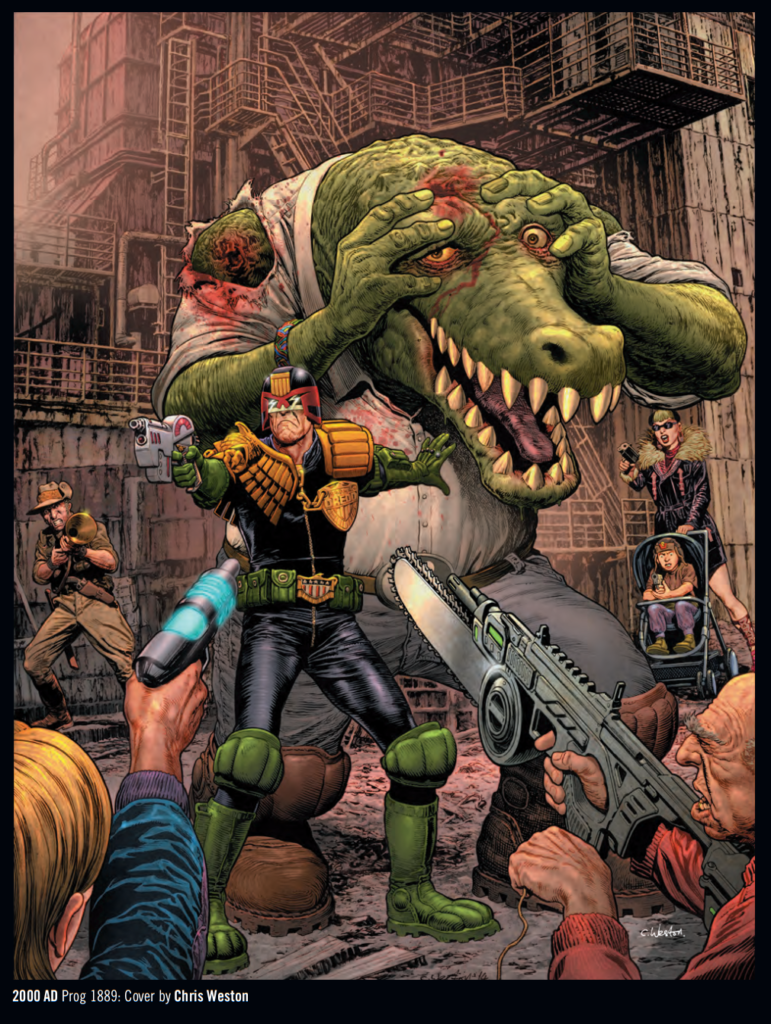
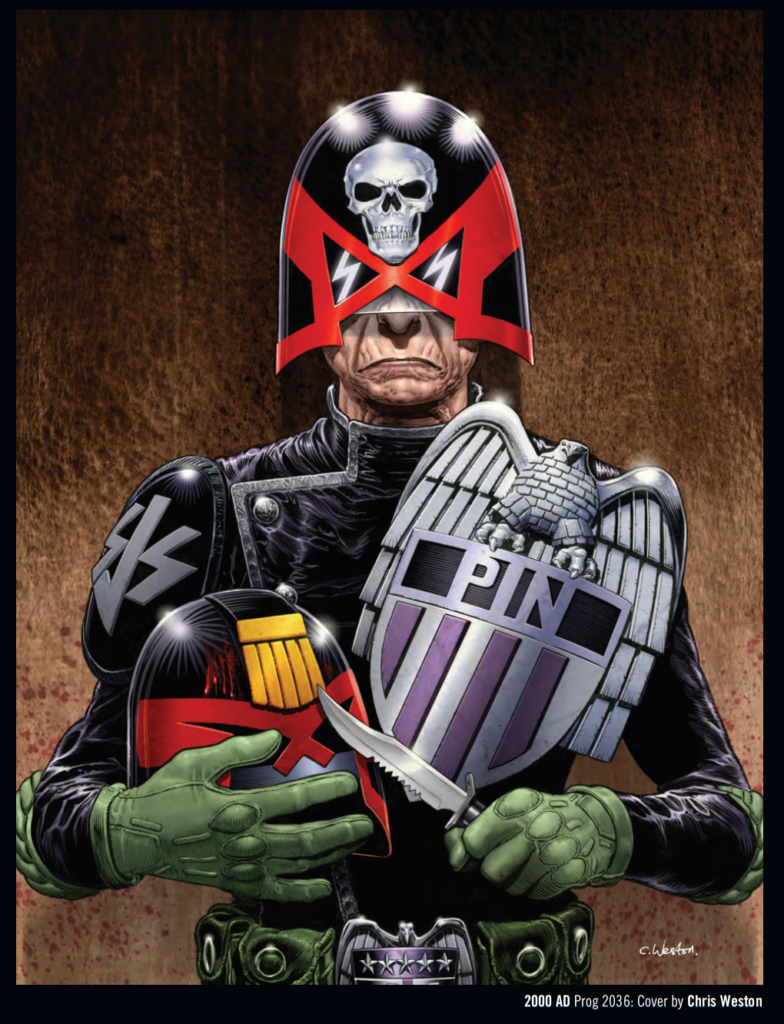
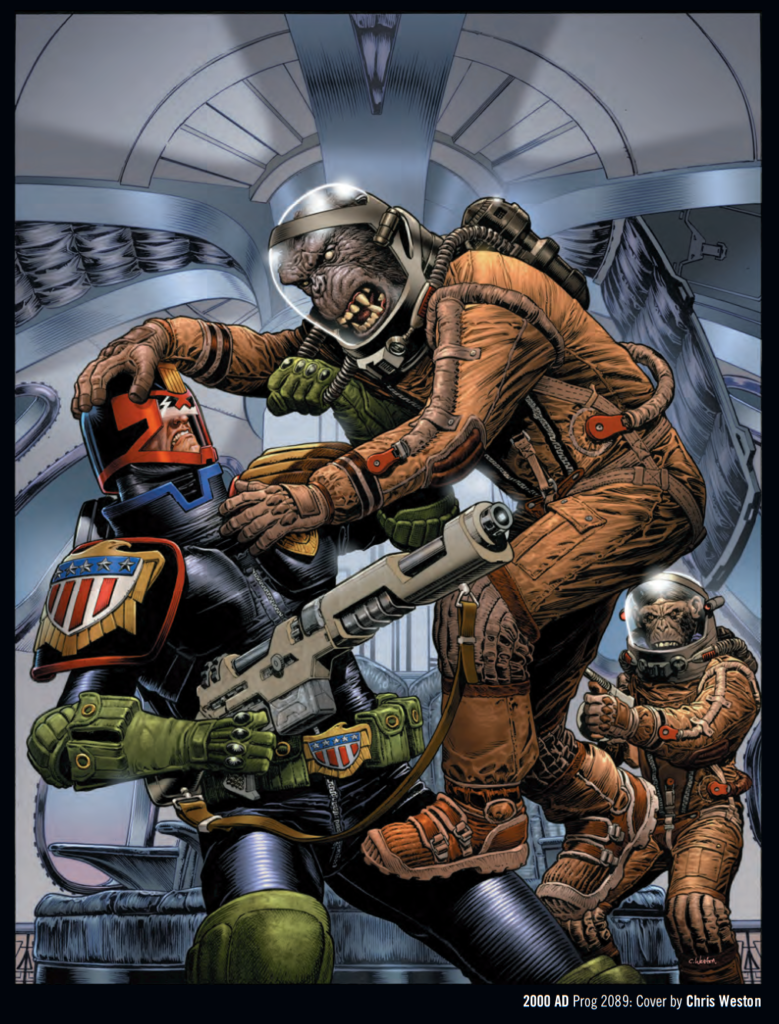
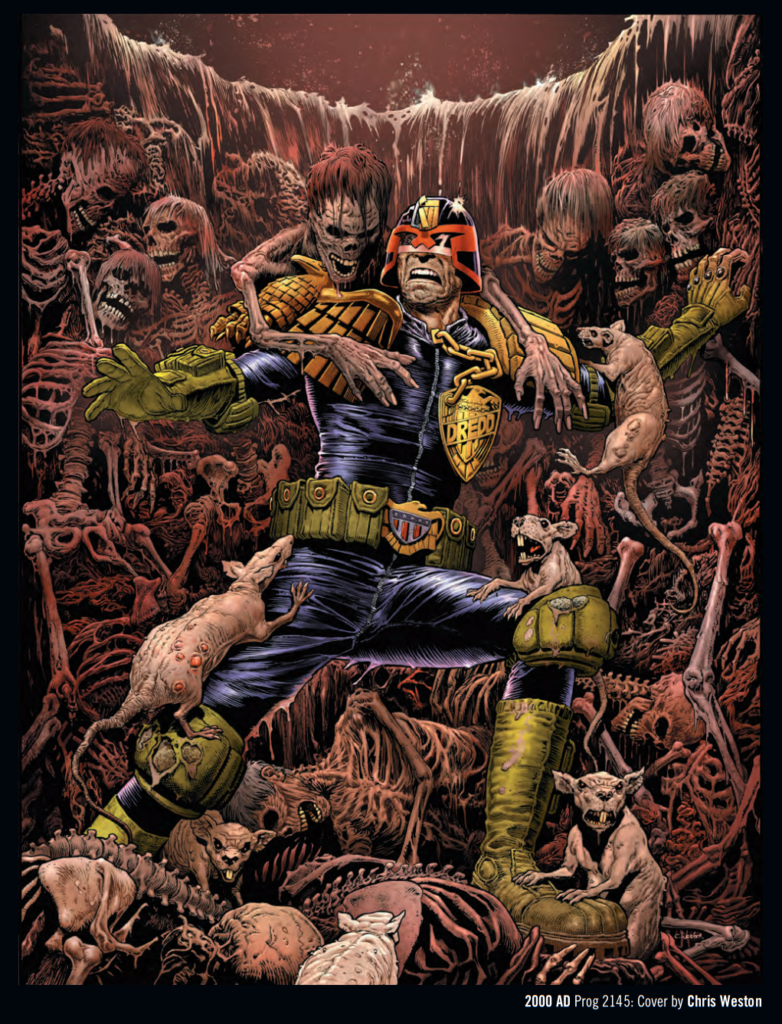
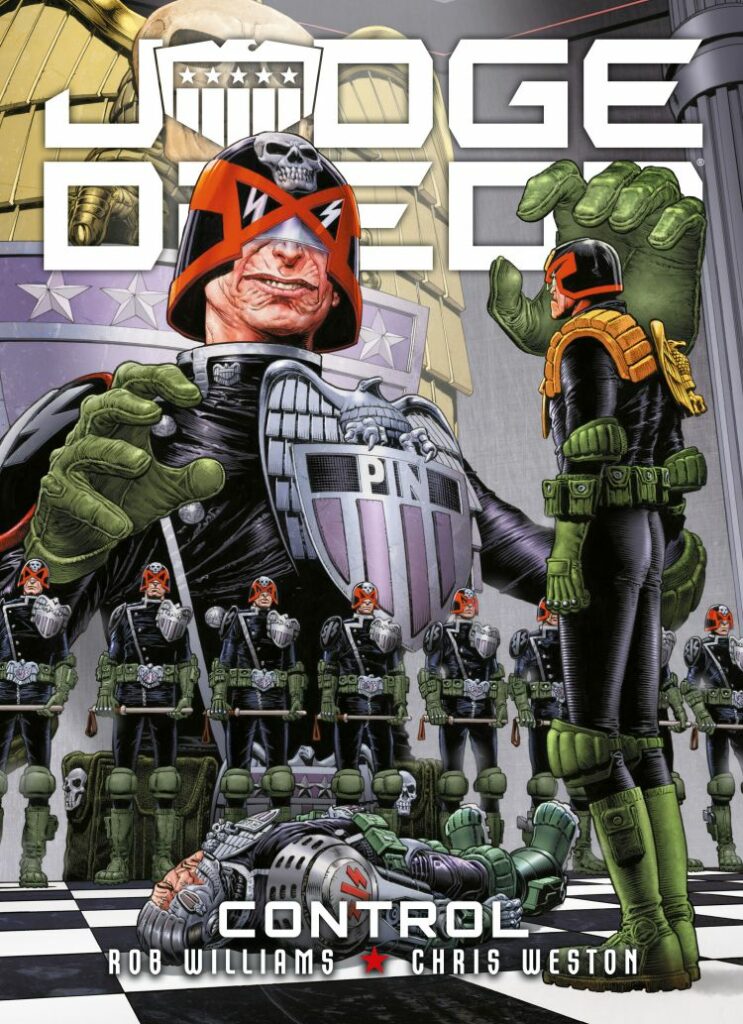
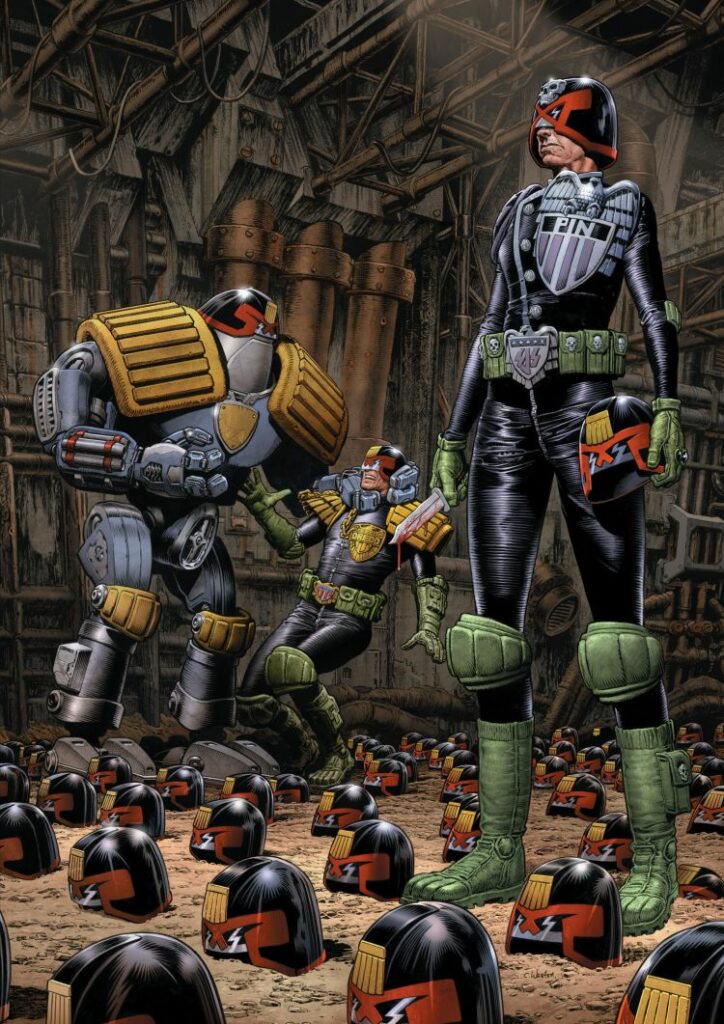
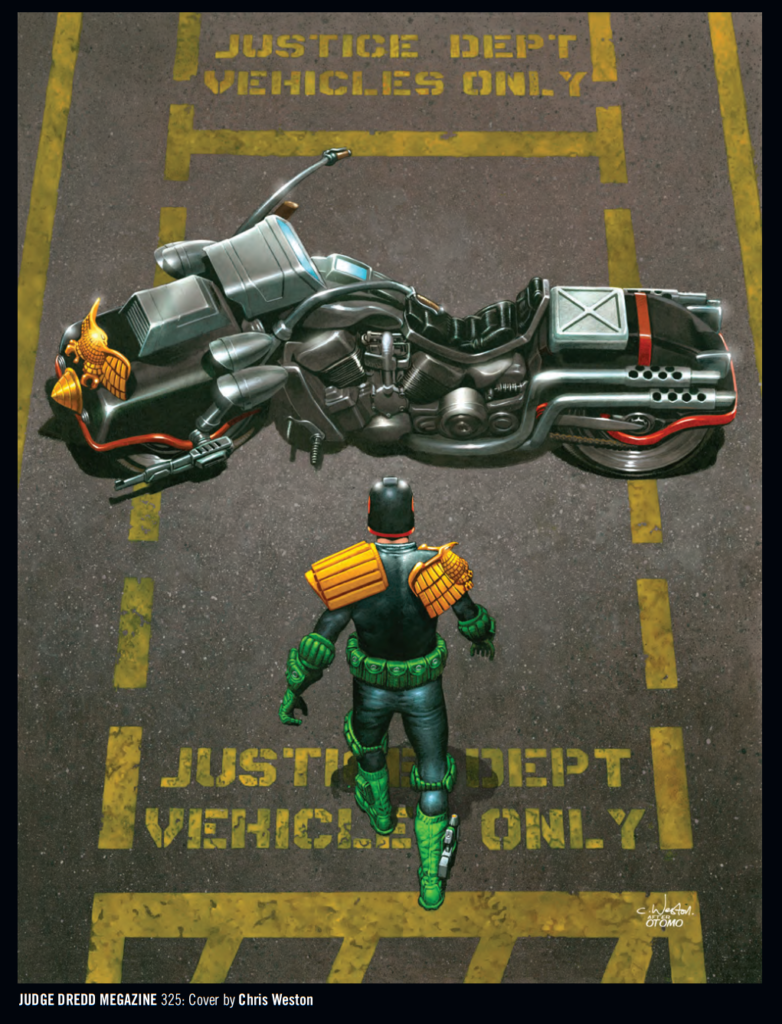
(another film project that Weston was involved with – see his website for more on that!)
